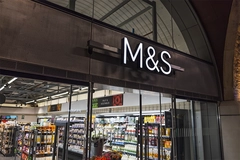
- Industry news
Industry news
- Category news
Category news
- Reports
- Key trends
- Multimedia
- Journal
- Events
- Suppliers
- Home
- Industry news
Industry news
- Category news
Category news
- Reports
- Key trends
- Multimedia
- Events
- Suppliers
Lallemand Applies for Novel Foods Status for Vitamin D-Rich Baker's Yeast

Lallemand intends that the baker’s yeast will be used primarily in the leavening of bread and in food supplements. The yeast is treated with UV light to enhance the amount of vitamin D2 present.

11 May 2012 --- A Canadian company has applied to the Food Standards Agency for approval to market a baker’s yeast rich in vitamin D2 as a novel food ingredient. Views are wanted on this application.
The company, Lallemand, intends that the baker’s yeast will be used primarily in the leavening of bread and in food supplements. The yeast is treated with UV light to enhance the amount of vitamin D2 present.
A novel food is a food or food ingredient that does not have a significant history of consumption within the European Union before 15 May 1997.
Before any new food product can be introduced on the European market, it must be assessed rigorously for safety. In the UK, the assessment of a novel food is carried out by the Advisory Committee on Novel Foods and Processes (ACNFP).
According to the application, Lallemand proposes to market a yeast (Saccharomyces Cerevisiae) containing an enhanced level of vitamin D2 as a nutritional food ingredient and food supplement ingredient in Europe.
Today, vitamin D2 is an authorized form of vitamin D in the EU (Regulation (EC) 1170/2009) and it is extracted (using solvents) from irradiated yeast by companies like Synthesia, a food operator based in the Czech Republic. Lallemand believes that there is a market for a less processed form of vitamin D2 obtained from yeast – as in the way some customers prefer raw sugar to refined sugar or whole grain wheat to white flour.
Therefore, Lallemand proposes to market this less processed form of vitamin D2 (using the same irradiated yeast used by companies such as Synthesia) as an alternative form to the extracted vitamin D2 in all its food applications (current foods and foods supplements) wherever vitamin D2 is authorized.
Yeast and its derivatives have a long history of safe use in the EU (as elsewhere in the world) in foods and in supplements (whether for baking or as sources of vitamin B, minerals, proteins or for its functional and taste properties like flavor enhancers). Vitamin D2 from yeast has a long history of authorized and safe use as a source of vitamin D.
The unprocessed form of vitamin D2 from yeast was widely used in the 1920’s and 1930’s as a form of vitamin D supplementation in Canada and US without any reported safety concern. In Canada, Lallemand’s vitamin D2 yeast has been confirmed not to be a Novel Food and has been approved by Health Canada as a form of vitamin D supplementation in foods where vitamin D is allowed to be added. In the US, Lallemand’s vitamin D2 yeast is also approved for food use by the FDA. “In the EU, even though this less processed form of vitamin D is used in feed and we strongly suspect it has been used in food prior to the development of the extraction process, we have not been able to document significant consumption in the EU before the cut-off date of 1997,” the company notes.










